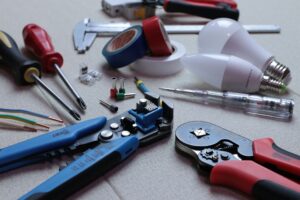
The foundation for every profitable service contracting business starts with tracking your expenses effectively. This action helps you grow your business carefully. Better understanding your costs and what types of pricing strategies are necessary for profitability. But tracking estimated vs. actual costs shouldn’t be considered a difficult activity. It can be much easier using a business management app, like FieldPulse.Expenses change on a daily basis depending on customer needs and service calls. Every single expense should be tracked consistently, with a user-friendly app that can be accessed at any time, from anywhere. It’s crucial to have the right system in place to support tracking processes, supported by disciplined organization and accuracy.The purpose of your business is to make a profit — you can’t do that if you spend more than you earn. Successful businesses measure their profitability on a daily basis. Moreover, services must be sold high enough above cost to ensure profitability. Keep reading to learn more.
You can’t rely on hope
Many companies fail to focus on what matters most: the numbers. Many business owners, and service contractors, spend a majority of their time making sure the jobs get completed on time and then hope the numbers will work themselves out. Yet, what is the quickest route to failure? A lack of profitability, slow collections, and an ineffective pricing strategy.If you want to succeed, your business must design its processes and operations around collecting enough revenue to pay the bills and then some. This can’t be accomplished with scattered spreadsheets–a more accurate solution for tracking estimated and tracking costs must be implemented.But, first, are you currently reaching your profit objectives? Do you know your profit target? How can you add services to increase your net profit margin? Don’t get stuck providing the same services as your competition. Take a look at your current costs and next year’s projected overhead.Consider the amount of risk you’re willing to absorb. Then, figure out how much net profit you need and want to make. Now, track your estimated and actual costs daily.
Are you leaving money on the table? Create, track, and follow up on estimates with FieldPulse. Get started with a 14-day free trial today.
Why do you need to understand and track estimated vs. actual costs?
At the most basic definition, estimated costs are a type of prediction while actual costs are the costs ready to be charged to the customer. To get an Estimate to Complete, you will need to subtract the actual cost from the estimated cost. Say that you predict the cost of rewiring a home’s lighting fixtures to cost $3,000–including labor and materials.Yet, when the work has been completed, the actual cost was $2,500. Your Estimated to Complete is $500. If you have a positive Estimated to Complete cost, this is a good sign. Yet, daily tracking will help you to more easily determine pricing discrepancies and inaccurate estimated costs. With this information, you can improve your profit margins through a customized pricing strategy.
What are your overhead numbers?
Your fixed cost of doing business is your overhead. Not knowing your overhead won’t cut it in a highly competitive marketplace. You should calculate your anticipated annual overhead expenses at the beginning of every year. Of course, the objective is to get a return. You should aim for a pre-tax net profit of between 20 to 40 percent.
Understand your job costs
It takes consistent tracking to understand your service contracting costs. You can’t bid on a job until you know how long it will take and what types of materials are needed. Plus, you need to have a deep understanding of your labor costs. Labor costs can include these items:
- Training
- Union dues
- Vacation
- Health insurance
- Workers’ compensation
- Tools
- Pension
- Profit sharing
Then, there comes equipment with things to track such as:
- Repairs
- Maintenance
- Purchase cost
- Payment costs
- Insurance
You can’t make money if you don’t understand both your estimated and actual costs.
Compute your gross margins
To improve profitability, it is critical to know what it costs to offer your services. This would take into account the Cost of Goods Sold (COGS) and the gross margin. To calculate cost of goods sold, add all of the costs you incur – including equipment and labor – when providing your services. To get your gross margin percentage, you would subtract the COGS from your revenue, then, divide it by your revenue.Now, you can see the difference between your pricing structure and what your business actually collects. Furthermore, your gross margin percentage will determine whether your service contracting business can continue to keep its doors open. Again, gross margins should range from between 20 and 40 percent.
Change your methods as you grow
If you want your business to scale, then you can’t rely on simple spreadsheets to track your costs. You need more advanced methods, such as FieldPulse contractor software, to take your company to the next level.Your system should let you spend less time on accounting and more time meeting and exceeding customer needs. And it should free up more time to focus on your company’s key offerings while having the ability to keep your costs and tracking under control.
Final thought
Costs and expenses need to be tracked effectively to ensure budget optimization — making sure you spend what you expect to spend. Variances are to be expected, but you can manage these variances through accurate tracking and record-keeping.Then, you can access your records to see which service calls are profitable and which need an updated pricing strategy. You can also see whether negative variances occur often and immediately create a plan of action for correction. You don’t want to be in the dark when it comes to profits and costs.
